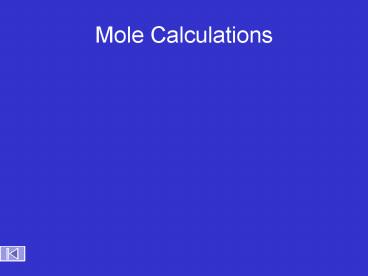Master the Mole: Volume Calculations Simplified

Understanding chemistry concepts like moles, mass, and volume is crucial for success in this subject, especially when tackling advanced topics such as reaction stoichiometry and gas laws. One particular challenge students often face is calculating the volume of a substance given its molarity or concentration. This Master the Mole series post will simplify these calculations, making these concepts easier to understand and apply in both theoretical problems and lab work.
Volume Calculation Basics


At the core of volume calculations in chemistry lies an understanding of molarity (M), which expresses the concentration of a solute in a solution. Molarity is defined as:
- Moles of Solute / Volume of Solution in Liters
We use molarity for:
- Dilutions: Preparing solutions by mixing a solute with a solvent to achieve a specific molarity.
- Stoichiometry: Determining the volume of substances needed for a chemical reaction.
Using Molarity to Find Volume

Given the equation for molarity, you can rearrange it to solve for volume:
[ \text{Volume (L)} = \frac{\text{Moles of Solute}}{\text{Molarity (M)}} ]Here's a step-by-step guide:
- Identify or calculate the moles of solute.
- Determine or use the given molarity.
- Divide moles by molarity to find volume.
⚠️ Note: Ensure your units are consistent. Molarity uses liters (L), so convert other volume units to liters if necessary.
Example Calculation

Let’s calculate the volume needed to have 0.05 moles of NaCl at a 2M concentration:
[ \text{Volume} = \frac{0.05 \, \text{mol}}{2 \, \text{M}} = 0.025 \, \text{L} ]| Step | Description |
|---|---|
| 1. Moles Calculation | Given as 0.05 moles of NaCl |
| 2. Molarity | Given as 2 M |
| 3. Volume Calculation | Volume = Moles / Molarity = 0.025 L |

Volume of Gases

The calculation of gas volumes requires us to look at the Ideal Gas Law, which expresses the relationship between pressure (P), volume (V), temperature (T), and the number of moles (n) of gas:
[ PV = nRT ]Where:
- P = pressure (in atmospheres, Pa, mmHg, etc.)
- V = volume (in liters)
- n = number of moles
- R = Ideal Gas Constant
- T = temperature in Kelvin
Calculating Gas Volume at STP

At Standard Temperature and Pressure (STP), which is 0°C (273.15 K) and 1 atm:
- 1 mole of any ideal gas occupies 22.4 liters
This simplifies calculations since the pressure and temperature are constant:
\[ V = \frac{n \times 22.4 \, \text{L/mol}}{1} \]So, if you have 2 moles of gas at STP:
\[ V = 2 \, \text{moles} \times 22.4 \, \text{L/mol} = 44.8 \, \text{L} \]Real-World Applications

Volume calculations are not just academic exercises; they have significant practical implications:
- Pharmaceuticals: Ensuring the precise dosing of medication solutions.
- Environmental Science: Calculating pollutant levels in air or water based on concentration.
- Chemical Engineering: Scaling up laboratory recipes to industrial processes.
Understanding and applying these concepts are vital for:
- Preparing solutions with accurate concentrations for experiments or commercial products.
- Determining how much of a reactant is needed for a reaction to proceed as intended.
Final Summary: In this post, we've covered the foundational principles for calculating volumes in chemistry, using molarity and the Ideal Gas Law, with applications in various scientific fields. While volume calculations can seem daunting at first, practice, familiarity with the formulas, and understanding their real-world use will make mastering the mole second nature. Remember to always work in the correct units and consider the physical state (liquid, gas) when performing these calculations.
What is molarity and how does it relate to volume calculations?

+
Molarity (M) is the concentration of a solute in a solution, expressed as moles of solute per liter of solution. To calculate the volume, you rearrange the formula to find volume = moles / molarity.
How can you calculate the volume of a gas if the pressure, temperature, and moles are known?

+
Using the Ideal Gas Law, PV = nRT, you can solve for volume V by rearranging the formula: V = nRT / P, where R is the Ideal Gas Constant, and the units must match those in the constants table.
What are some common mistakes to avoid when calculating volumes in chemistry?

+
Common mistakes include not converting all units to SI (like liters for volume), not adjusting for temperature changes in gas volume calculations, and forgetting to account for stoichiometry in reaction volume calculations.
Why does the concept of molarity matter in chemical reactions?

+
Molarity helps determine the amount of substance involved in a reaction. It’s critical for understanding reaction kinetics, optimizing reaction conditions, and controlling the synthesis of compounds.
How do you adjust volume calculations for non-ideal gas conditions?

+
For real gases, you need to consider van der Waals equation or use more advanced models like the virial equation to account for non-ideal behavior, particularly at high pressures or low temperatures.